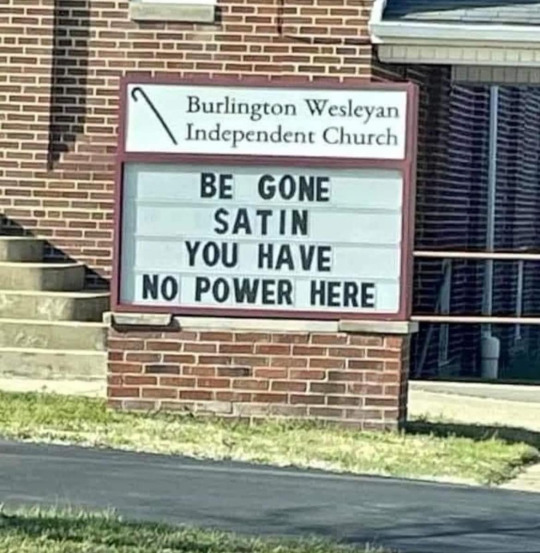#the wesleyan church
Photo

The Wesleyan church, Grange in Borrowdale. Cumbria, July 2014.
#black and white photography#borrowdale#church#cumbria#grange#the lake district#nikon#nikond90#original photographers#photographers on tumblr#photography#the wesleyan church
6 notes
·
View notes
Text

Churches of Cornwall: Healeys Cornish Cyder Farm in Callestick is where Callestick Veor chapel once stood, with the much later Wesleyan Methodist chapel opposite.
#history#historyfiles#chapels#churches#churches of england#cornwall#healeys#cornish#cyder#Callestick#methodist#wesleyan
2 notes
·
View notes
Text
I am so scholastically in love with this librarian. Osinski does such *chef's kiss* good work with such *chef's kiss* good faith.
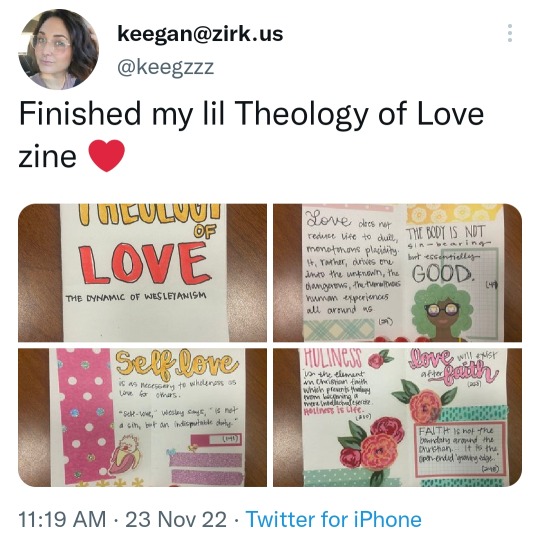
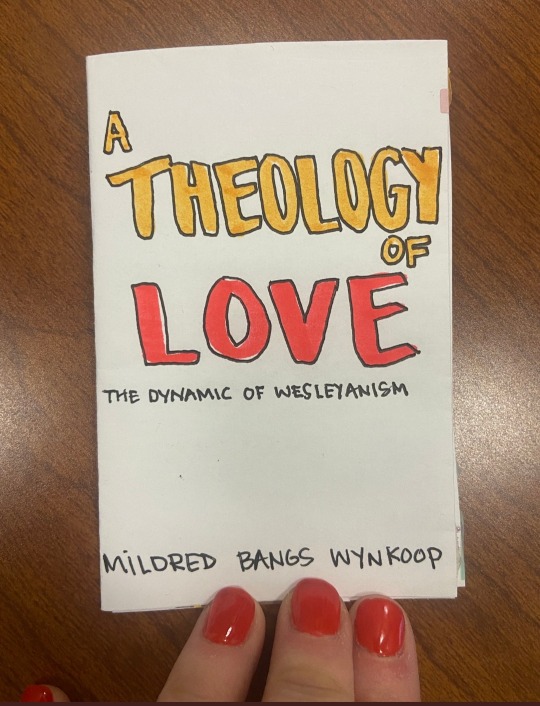



#Keegan Osinski#Queering Wesley Queering the Church#Queering Wesley#theology of love#Wesleyan tradition#love#queer theology#theology#essentially good#holy bodies#twitter post#christianity
4 notes
·
View notes
Text
“I Am Thine” based on Jeremiah 31:31–34 and Matthew 25:14-30
Historical Background of Covenant Renewal Service.
This service comes to us through John Wesley, the founder of our Methodist theological tradition. For him what it meant to be a mature disciple of Christ was the joining of believers in a covenant "to serve God with all our heart and with all our soul." He urged his Methodist followers to renew, "at every point, our covenant, that the Lord should be our God."
On August 11, 1755, Wesley refers to an occasion when he conducted a service that provided opportunity for persons to make or renew that covenant with God. Listen to this account from his daily journal:
"I mentioned to the congregation another means of increasing serious religion, which had been frequently practiced by our forefathers, namely, the joining in a covenant to serve God with all our heart and with all our soul.
I explained this for several mornings and on Friday many of us kept a fast to the Lord, beseeching him to give us wisdom and strength, to make a promise unto the Lord our God and keep it.
On Monday, August 11, I explained once more the nature of such an engagement, and the manner of doing it acceptably to God.
At six in the evening we met for that purpose. After I had recited the tenor of the covenant proposed all those who desired to give testimony of their entrance into this covenant stood up, to the number of about 1,800 persons.
Such a night I scarce ever saw before. Surely the fruit of it shall remain forever." 1
This became something traditional to do at the beginning of each year, a fact I didn't know until our Bishop asked us to engage in a service of Covenant Renewal sometime this January. At the end of December a window closed for churches to decide to leave The United Methodist Church but keep their buildings and assets. The churches that remain, remain in connection and covenant with each other to love God, love God's people, and work together for the building of the kindom. So as we remember and renew the vows of our baptisms and the commitments we make to each other, we also remember the ways that The United Methodist Church holds us together in sacred covenant.
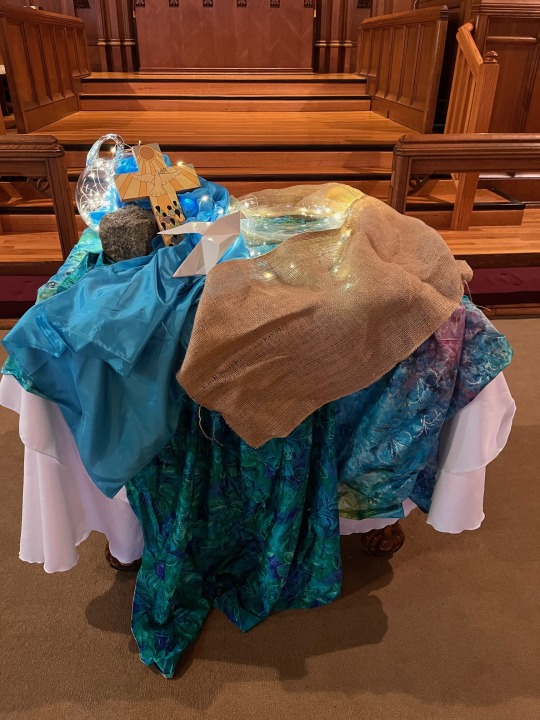
Sermon
I'm gushy about baptisms. The promises made are so sacred, and the experience of including a new person in the Body of Christ are so powerful. I have favorite parts of course. I really like asking if people “accept the freedom and power God gives you to resist evil, injustice, and oppression in whatever forms the present themselves?” I like the water part, and the prayer over the water, and while it still feels a little strange, I like passing on the Holy Spirit too.
But the most important part of baptism for me isn't explicit. It is that when we baptize someone, we celebrate their very existence and thank God for them, and while we are thanking God for them, our gratitude for their very existence, becomes the way in which we welcome them into the church and promise to teach them about God and grace. I try, at every baptism, to remind all the people present that this wonderful celebration of the person or people being baptized is also a reminder of the same celebration for them. That each and every human life is sacred, that God delights in each one, and that at some time, the church took time to celebrate YOU too. (And if it hasn't, it will if you are willing.)
The church makes promises at baptism, for today they've been adapted to be mutual rather than specific to the baptized, which is right for today and a good reminder for every day, “By teaching and example we will guide each other to accept God's grace, to profess faith openly, to demand justice in all places, to love freely, and to build the kindom of God on earth.” (#nopressure)
I cannot help but think that the parable of the talents is a description of the world as it is, rather than being about God's kindom. In the world as it is, having gets you more, interest works for the wealthy, and the powerful can be terribly frightening. The church is meant to be something different. We are people defined by being loved by God, and formed by love in community. At our best, we are signs of love and hope in the midst of a world that is terrified and has far too much hate.
The words of the Baptismal Covenant call us back to ourselves, to our commitments to God and each other, to the ways that we are doing something different than the world's competition, accusation, and inherent violence.
A piece of today's worship that is not a part of our traditional baptismal covenant is the “Covenant Prayer in the Wesleyan Tradition.” I have no idea how familiar this is to you – it maybe be the foundation of your faith (it has been to many people I know) or completely new. It is a prayer of humility, and I think a prayer of community. It puts the needs of each of us as individuals second to the needs and dreams of God for the whole. I find it hard to pray, because it is truly terrifying what God might do. But then I remember that I'm not actually afraid of God. God is seeking goodness, and for each of us and all of us at the same time.
When I sit with God and try to listen, I always expect God to add things to my to do list – to sound a lot like my internal voices. Those voices that chide me for not having done things yet, or better, or for the things I have done, or for wasting time, or not … well, for what I do and what I don't do. But when I actually listen to God, it turns out God isn't the source of all that internal judgement. That's all me. God is the one saying, “Hello love, you can stop planning to optimize your day, and just be. You are enough as you are, and I'm not asking more of you.” This might sound different for you, probably because your internal voices are different. But God is the one saying things like, “I love you, and you are already good enough.” “I love you, and you don't have to earn it.” “I love you and see you as you are, you don't need to be any more special for me to love you.” “I love you, and you don't have to know enough to count for me.” “I love you, and I'm here supporting you.” “I love you, and I'm with you always no matter what you face.”
Really, these are the things we try to convey at baptism, and we promise to teach the baptized: that each one is loved by God, defined by that love, and enough as they are.
What a joy to remember that we are a community committed to and defined by God's love. Holy One, I am thine – and I'm going to trust you to take it from there. Amen
1Adapted from http://wesley.nnu.edu/john-wesley/covenant-service-directions-for-renewing-our-covenant-with-god/wesley-covenant-service-1998-jeren-rowel/
Photo Credit: Dana Carroll.
Baptismal Remembrance Design: Karyn McCloskey
Rev. Sara E. Baron
First United Methodist Church of Schenectady
603 State St. Schenectady, NY 12305
Pronouns: she/her/hers
http://fumcschenectady.org/
https://www.facebook.com/FUMCSchenectady
January 21, 2024
#thinking church#progressive christianity#schenectady#fumc schenectady#first umc schenectady#umc#sorry about the umc#rev sara e baron#Wesley#John and Charles#Wesleyan Covenant
0 notes
Text
More Information on the "Wesleyan Methodist Mystery House"- Not in Carleton Place but Ramsay
From Des and Jean Moore’s Clippings- no date
Years ago Art’s Fruit and Variety was a popular go to place on Townline. Before there was no McNeely Bridge I used to wander down behind their property like others, and always marveled at the ruins of an old stone building. My mind is old now, but I do believe it is located on the other side of the bridge behind 53 Colours, but it is recorded as being…

View On WordPress
#Carleton-Place#Church#genealogy#george findlay park#History#Lanark-County#ontario#ramsay#stone house#townnline road#Wesleyan Methodist#Wesleyan Methodist Mystery House
0 notes
Text
St Paul's Carnival, Bristol, 01.07.2023
This was my first visit to St Pauls Carnival since the COVID-19 epidemic. I got regularly to this Afro-Caribbean street festival, mainly for the authentic jerk chicken, but also it’s a great chance to hear some good music, some proper Bristol sounds and it’s also a cheap day out and lots and lots of fun. The whole carnival costs about a £100000 to put on each year and outside of Notting Hill…

View On WordPress
#Afro-Caribbean#Alonestar#Bristol#Bristol Carnival#Bristol Music#Carnival#Drum and bass#festival#house music#Jethro SHeeran#jungle#Malcolm X Centre#MOBO#music#racism#reggae#St Paul&039;s Carnival#St Pauls Carnival 2023#Wesleyan Holiness Church#Windrush
1 note
·
View note
Text
Howick Historical Village
A beautiful re-creation of a New Zealand colonial village using surviving buildings from the surrounding area. Despite its name, Howick Historical Village is actually located in the suburb of Pakuranga. I visited it a decade ago though suspect / hope that little has changed since.
The Howick Historical Society dates from 1962, and the village started to develop in 1972 when the council offered…

View On WordPress
#Auckland#Auckland Heritage#heritage#Howick Arms Hotel#Howick Historical Village#Ngamapus Raupo Thatched Cottage#photography#Sergeant Michael Ford&039;s Fencible Cottage#travel#Wesleyan Methodist Church
1 note
·
View note
Photo

st. johns wesleyan church // st johns, portland, oregon
1 note
·
View note
Text
Jason DeRose at NPR:
The United Methodist Church, one of the largest Protestant denominations in the U.S., has voted to repeal its ban on LGBTQ clergy as well as prohibitions on its' ministers from officiating at same-sex weddings.
Delegates overwhelmingly approved the changes, 692 to 51, during the United Methodist Church's General Conference.
The meeting is taking place this week in Charlotte, N.C. after the pandemic delayed the 2020 General Conference where these decisions has been slated to take place.
The tone of the Charlotte meeting has been decidedly upbeat, in sharp contrast with the last, highly contentious global meeting back in 2019, when heated floor debates left many feeling hurt.
In fact, there was no floor debate over the clergy and marriages rules this time around. Rather, they were included on a consent agenda.
However, in the years leading up to this General Conference, about one-quarter of United Methodist congregations in the U-S left the denomination. Those congregations tended to be among the most conservative in the church. Their departure made the decisions this year less fraught.
Some of those departing congregations left to form the more conservative Global Methodist Church and others decided to become independent. The main reason many of those congregations left the denomination is that despite the church's official rules against LGBTQ clergy and same-sex weddings, some local geographic conferences chose to not enforce them.
At the United Methodist Church's General Conference today, the UMC voted overwhelmingly to lift its ban on LGBTQ+ clergy and denominational clergy officiating same-sex weddings.
This is made possible in party by the departure of more conservative churches to either the Global Methodist Church, independent of any denomination, or other Wesleyan denominations.
See Also:
LGBTQ Nation: United Methodist Church ends ban on LGBTQ+ clergy in historic vote
CNN: United Methodist Church lifts 40-year ban on LGBTQ clergy
#2024 UMC General Conference#United Methodist Church#United Methodist Church Split#UMC#LGBTQ+#LGBT Religion#Religion#Christianity
74 notes
·
View notes
Note
One million dollar question: is it true that the Bible condems homosexuality? I had a discussion with two conservatives who sent me some verses that seem to confirm that but i don't know much about the context although i know this is important too
Let’s start here: why is this the million dollar question? Why does it matter what the Bible has to say about sex, or love, or human relationships? At the end of the day, it’s just a book, right?
Oceans of ink (and blood) have been spilled over not only what the Bible says, but what it does, how it functions. The course of empires, nations, and families have been shaped by the contents of this book, and from a historical and cultural perspective, it holds a lot of weight. But you didn’t ask about the sociological, you asked about the theological, so let’s explore.
Different Christian traditions vary in their approach to scripture. For example: some Protestant denominations believe that the Bible is inspired, inerrant, and infallible. In this paradigm, God is the ultimate author of scripture working through human hands, and the resulting text is both without error and in no way deceptive or mistaken. Similarly, The Second Vatican Council decreed that “the books of Scripture must be acknowledged as teaching solidly, faithfully and without error that truth which God wanted put into sacred writings for the sake of salvation.” When a member of the clergy is ordained into the Episcopal Church they swear that they “do believe the Holy Scriptures of the Old and New Testaments to be the Word of God, and to contain all things necessary to salvation.”
Can you see how many of these points of doctrine overlap yet seek to distinguish themselves from one another? Theologians have spent lifetimes arguing over definitions, and even when they manage to settle on solid teachings, the way that the teaching is interpreted by the clergy and incorporated into the lives of the laity varies WIDELY. As much as systematic theology may try, humans aren’t systematic beings. We’re highly contextual: we only exist in relation to others, to history, to circumstance, and to the divine. We simply cannot call up God to confirm church teaching, and I think a lot of people cling excessively to the Bible as a result of the ache (dare I even say trauma) of being separated from God via space and time in the way we currently are.
God is here, but God is not here. God is within us, God is within the beloved, God is within the sea and sky and land, and yet we cannot grasp God to our bodies in the way we long to. In this earthly lifetime, we are forever enmeshed in God, yet forever distinct, and that is our great joy and our great tragedy.
So barring a direct spiritual experience or the actual second coming, we're left to sort through these things ourselves. And because humans are flawed, our interpretations will always be flawed. Even with the presence of the Holy Spirit in our lives guiding us.
When engaging with any sort of Biblical debate, it is essential that you have a strong understanding of what the Bible means to you, an an embodied individual living a brief little awful and wonderful life on Earth. Otherwise it's easy to get pushed around by other people’s convincing-sounding arguments and sound bites.
Here’s where I show my hand. As a confirmed Episcopalian I believe that reason, tradition, and scripture form the “three-legged stool” upon which the church stands, interdependent and interrelational to each other, but I’ve also like, lived a life outside of books. I’ve met God in grimy alleyways and frigid ocean waters and in bed with my lovers. So my stool is actually four-legged, because I think it’s essential to incorporate one’s personal experience of God into the mix as well. (I did not invent this: it’s called the Wesleyan quadrilateral, but the official Wesleyan quadrilateral insists that scripture must trump all other legs of the table in the case of a conflict which...*cynical noises*)
Please do not interpret this answer as me doing a hand-wavey "it's all vibes, man, we're all equally right and equally wrong", but I do absolutely think we have a responsibility as creatures to weigh the suffering and/or flourishing of our fellow creatures against teachings handed down through oral tradition, schisms, imperial takeover of faith, and translation and mistranslation. Do I believe the Bible is sacred, supernatural even, and that it contains all things necessary to find one's way to God, if that is the way God chooses to manifest to an individual in a given lifetime? Absolutely. Do I believe it is a priceless work of art and human achievement that captures ancient truths and the hopes of a people (as well as a record of their atrocities) through symbols, stories, and signs? Unto my death, I do.
However, I am wary of making an object of human creation, God-breathed though it may be, into an idol, and trapping God in its pages like God is some sort of exotic bug we can pin down with a sewing needle.
Finally, we have reached the homosexuality debate. One of my favorite sayings of Jesus is Matthew 5: 15-17: "Beware of false prophets, who come to you in sheep's clothing but inwardly are ravenous wolves. You will know them by their fruits. Are grapes gathered from thorns, or figs from thistles? In the same way, every good tree bears good fruit, but the bad tree bears bad fruit." In other words: look at what religious teachings have wrought in the world. When I look at homophobic interpretations of the Bible, I see destruction, abuse, suffering, neglect, alienation, spiritual decay, and death. When I look at theology that affirms the holiness of LGBTQ+ relationships, I see joy, laughter, community building, thoughtful care, blooming families, creativity, resilience, and compassion. I see the love of Christ at work in the world. I see the hands of a God who chose under no duress to take up residence in a human body, to drink wine with tax collectors and break bread with sex workers and carry urchin children around on his shoulders. That's my limited little pet interpretation, but hey, that's all any of us really have, at the end of the day.
So, I am absolutely happy to do a play-by-play breakdown of why those passages you were given (we queer Christians often call them "clobber passages" or "texts of terror") don't hold water in a theological, historical, and cultural context. We can talk about Jesus blessing the eunuch and the institution of Greek pederasty and Levitical purity laws and Paul because I've done that reading. I've spent my nights crying in self-hatred and leafing through doctrine books and arguing with my pastors and writing long grad school essays on the subjects. Send me the verses, if you can remember them, and I'll take a look. But it's worth noting that out of the entire Bible, I believe there are only six that explicitly condemn homosexuality AND I'm being generous and including Sodom and Gommorah here, which is a willful and ignorant misreading if I've ever seen one.
In the meantime, I recommend books by people smarter than me! Try Outside The Lines: How Embracing Queerness Will Transform Your Faith by Mihee Kim-Kort, or Does Jesus Really Love Me by Jeff Chu, or Transforming: The Bible and the Lives of Transgender Christians by Austen Hartke!
And take a breath, dear one. Breathe in God, in the droplets of water in the air and in the wind from the south. Breathe in the gift of life, and know that you are loved, now and unto the end of the age and even beyond then.
#I'm sorry this answer is the length of a Victor Hugo novel but I've been mulling on it for days and it unlocked the theology gremlin#who lives in my brain#theology#christianty#queer christianity#progressive christianity#religionposting#catholicism#episcopalian#lgbtq community
46 notes
·
View notes
Text
Online History Short-Courses offered by Universities Masterpost
Categories: Classical Studies, Egyptology, Medieval, Renaissance, The Americas, Asia, Other, Linguistics, Archaeology
How to get Coursera courses for free: There are several types of courses on Coursera, some will allow you to study the full course and only charge for the optional-certificate, for others you will need to audit it and you may have limited access (usually just to assignments), and thirdly some courses charge a monthly subscription in this case a 7 day free trial is available.
Classical Studies 🏛️🏺
At the Origins of the Mediterranean Civilization: Archeology of the City from the Levant to the West 3rd-1st millennium BC - Sapienza University of Rome
Greek and Roman Mythology - University of Pennsylvania
Health and Wellbeing in the Ancient World - Open University
Roman Architecture - Yale
Roman Art and Archeology - University of Arizona
Rome: A Virtual Tour of the Ancient City - University of Reading
The Ancient Greeks - Wesleyan University
The Changing Landscape of Ancient Rome. Archeology and History of Palatine Hill - Sapienza University of Rome
Uncovering Roman Britain in Old Museum Collections - University of Reading
Egyptology 𓂀⚱️
Egypt before and after pharaohs - Sapienza University of Rome
Introduction to Ancient Egypt and Its Civilization - University of Pennsylvania
Wonders of Ancient Egypt - University of Pennsylvania
Medieval 🗡️🏰
Age of Cathedrals - Yale
Coexistence in Medieval Spain: Jews, Christians, and Muslims - University of Colorado
Deciphering Secrets: The Illuminated Manuscripts of Medieval Europe - University of Colorado
Enlightening the Dark Ages: Early Medieval Archaeology in Italy - University of Padova
Lancaster Castle and Northern English History: The View from the Stronghold - Lancaster University
Magic in the Middle Ages - University of Barcelona
Old Norse Mythology in the Sources - University of Colorado Bolder
Preserving Norwegian Stave Churches - Norwegian University of Science and Technology
The Book of Kells: Exploring an Irish Medieval Masterpiece - Trinity College Dublin
The Cosmopolitan Medival Arabic World - University of Leiden
Renaissance ⚜️🃏
Black Tudors: The Untold Story
European Empires: An Introduction, 1400–1522 - University of Newcastle
The Mediterranean, a Space of Exchange (from Renaissance to Enlightenment) - University of Barcelona
The Life and Afterlife of Mary Queen of Scots - University of Glasgow
The Tudors - University of Roehampton London
The Americas 🪶🦙🛖
History of Slavery in the British Caribbean - University of Glasgow
Indigeneity as a Global Concept - University of Newcastle
Indigenous Canada - University of Alberta
Indigenous Religions & Ecology - Yale
Asia 🏯🛕
Contemporary India - University of Melbourne
Introduction to Korean Philosophy - Sung Kyun Kwan University
Japanese Culture Through Rare Books - University of Keio
Sino-Japanese Interactions Through Rare Books - University of Keio
The History and Culture of Chinese Silk - University for the Creative Arts
Travelling Books: History in Europe and Japan - University of Keio
Other
A Global History of Sex and Gender: Bodies and Power in the Modern World - University of Glasgow
A History of Royal Fashion - University of Glasgow
Anarchy in the UK: A History of Punk from 1976-78 - University of Reading
Biodiversity, Guardianship, and the Natural History of New Zealand: A Museum Perspective - Te Papa
Empire: the Controversies of British Imperialism - University of Exeter
Great South Land: Introducing Australian History - University of Newcastle
Indigeneity as a Global Concept - University of Newcastle
New Zealand History, Culture and Conflict: A Museum Perspective - Te Papa
Organising an Empire: The Assyrian Way - LMU Munich
Plagues, Witches, and War: The Worlds of Historical Fiction - University of Virginia
Russian History: from Lenin to Putin - University of California Santa Cruz
Linguistics 🗣️
Introduction to Comparative Indo-European Linguistics - University of Leiden - Coursera version
Miracles of Human Language: An Introduction to Linguistics - University of Leiden
Archeology 💀
Archeoastronomy - University of Milan
Archaeology and the Battle of Dunbar 1650 - Durham University
Archaeology: from Dig to Lab and Beyond - University of Reading
Archeology: Recovering the Humankind's Past and Saving the Universal Heritage - Sapienza University of Rome
Change of Era: The Origins of Christian Culture through the Lens of Archaeology - University of Padova
Endangered Archaeology: Using Remote Sensing to Protect Cultural Heritage - Universities of Durham, Leicester & Oxford
Enlightening the Dark Ages: Early Medieval Archaeology in Italy - University of Padova
Exploring Stone Age Archaeology: The Mysteries of Star Carr - University of York
Forensic Archaeology and Anthropology - Durham University
Roman Art and Archeology - University of Arizona
The Changing Landscape of Ancient Rome. Archeology and History of Palatine Hill - Sapienza University of Rome
#side note: most of the universities that offer courses in English on these sites are European or American(USA)#so the lack of courses about Asia (other than Japan) The Americas and Africa is not because of me#history#historical#classical studies#ancient Greece#ancient Rome#pompeii#Egyptology#pharaoh#ancient Egypt#medieval#medieval europe#Medieval Arabia#Renaissance#Tudor#the tudors#history courses#courses#linguistics#archeology#archeology courses#resources#free resources
165 notes
·
View notes
Text
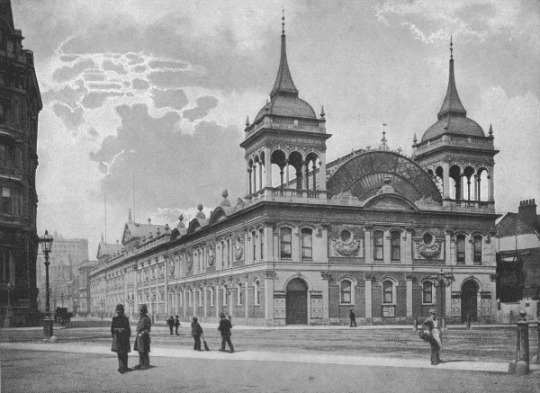

Who would have thought that on the present site of the Central Methodist Hall opposite Westminster Abbey, there was once a huge 'pleasure palace' hosting a music hall and variety acts and could accommodate a 400 piece orchestra
Designed by Alfred Bedborough at the height of empire, the building was complete and open to the public in 1876. Named The Royal Aquarium and Winter Garden, the building had within it an aquarium and an attached theatre which had a main hall 340 feet long by 160 feet wide, it was covered with a glass and iron roof and was decorated with palm trees, fountains and sculptures. There was thirteen large aquarium water tanks which were meant originally to be filled with fish and sea creatures and 'wonders of the depths', but that never happened and the tanks remained empty. The only 'sea creature' that was eventually ever displayed was a dead whale, but for obvious reasons it was quickly removed.
The building and venue which became known as 'The Tank' became a bit of a lemon, and lost its popularity and was quietly closed down. The building and land was sold to the Wesleyan Methodist Church in 1903. The the site was cleared and the Methodist Central Hall was built on the site in 1911.
31 notes
·
View notes
Text

Churches of Cornwall: the tower of the Grade 2 listed St Hermes Church in Cornwall is believed to date from about 1250, quite an early date when the majority of towers were added in the 1300s-1400s.
2 notes
·
View notes
Text
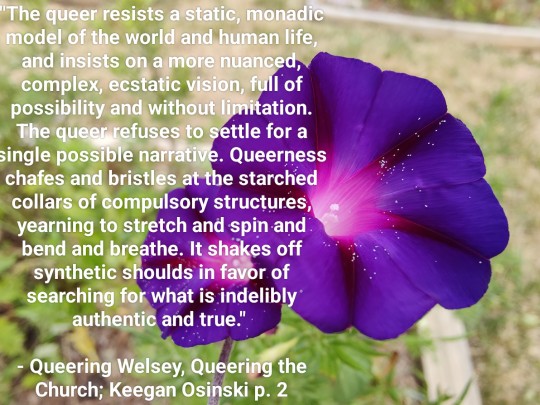
"The queer resists a static, monadic model of the world and human life, and insists on a more nuanced, complex, ecstatic vision, full of possibility and without limitation. The queer refuses to settle for a single possible narrative. Queerness chafes and bristles at the starched collars of compulsory structures, yearning to stretch and spin and bend and breathe. It shakes off synthetic shoulds in favor of searching for what is indelibly authentic and true."
- Queering Welsey, Queering the Church; Keegan Osinski p. 2
[Picture: white text on background photo of deep purple morning glories, pollen dusted on them like stardust with a blurred green background of a community garden]
#Queering Wesley Queering the Church#Keegan Osinski#John Wesley#Wesleyan Tradition#god loves queers#queer theology#theology
1 note
·
View note
Text
You Nakai — Reminded by the Instruments: David Tudor's Music (Oxford University Press)
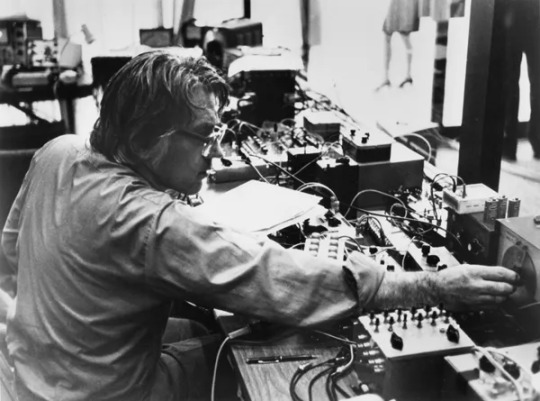
You Nakai's Reminded by the Instruments: David Tudor's Music is a mammoth and vividly detailed analysis of the late David Tudor's trajectory from boy prodigy on the church organ to one of the first purveyors of live electronic music, with stops along the way as go-to pianist interpreting scores from most of the major composers of experimental music through the 1950s. Clocking in at 768 pages with over 300 images of Tudor's performances, instruments, schematics and block flow diagrams, the book goes into intense detail and will not be an easy read for those looking for a mere chronology of Tudor's work. Nor will the book please those in search of anecdotes about Tudor's personal life. As the title implies, this book is mainly about the instruments Tudor developed and used in his live-electronic work from the early 1960s until his death in 1996.
The very notion of what Tudor considered an instrument takes Nakai's research down a long, and at times, circuitous path through numerous interviews with former friends and colleagues, such as Gordon Mumma and Pauline Oliveros, to mining the archives of the David Tudor Papers at the Getty Research Institute in Los Angeles, the David Tudor Collection at Wesleyan University in Middletown Connecticut (with over 500 instruments; 150 of which were built by Tudor himself) and the Merce Cunningham Dance Foundation Records at the New York Public Library. This trove of material included receipts, crumpled notes, random scribbles on the backs of envelopes, empty packages of electronic components, clippings from hobby electronics magazines, letters from strangers, train and bus tickets, circuit plans, photos, tapes of interviews, video recordings and bills of material for various electronic projects.
If this at all sounds overwhelming, you'd be more than right in thinking so. And it seems this was also the case for Nakai, who at the beginning of his work on the book, which went from 2007-2019, knew next to nothing about analog electronics. The actual idea of writing about Tudor's work stemmed from a random peek into the archives at the Getty Research Institute when Nakai was doing research there for another project. This led to Nakai spending the next 12 years of his life studying and writing about Tudor's work, which for Nakai most resembled a black box that, in order to be fully understood, demanded to be dismantled and looked at from the inside. To achieve this, Nakai employed a method of research he termed reverse-musicology, in which he tried to approach Tudor's materials as Tudor would have approached them himself. But what did this mean exactly?
Part of the answer lies in Nakai's chosen title for the book, taken from a fragment of the Walt Whitman poem A Song for Occupations, which Tudor had scribbled in one of his notebooks around 1955: All music is what awakens from you when you are reminded by the instruments. For Tudor, being reminded by the instruments meant, in his words, Observing electronic components and circuitry as individual and unique, rather than as servomechanisms, revealing their personalities, directly related to the particular musician involved with them. The deeper this process of observation, the more the components seem to require and suggest their own musical ideas, arriving at that point of discovery, always incredible, where music is revealed from the 'inside,' rather than 'outside.'
This quote is one of the few directly written by Tudor in Nakai's book. Tudor was not known for talking much about his work, if at all. He was often viewed as something of an enigma or living puzzle by his friends and colleagues. One of Nakai's main premises for working on this book was to approach Tudor's materials as Tudor did himself. Which in Tudor's case would be how he went about trying to solve the particular puzzle involved with interpreting a musical object, composition or performance. As John Cage once said about his friend, favorite musician and interpreter of his work, Tudor's interest in puzzles invited the whole thing of indeterminacy. To these ends, Nakai devised a two-fold method of approaching the massive puzzle that was Tudor's work: 1) Observe the given material thoroughly in an unbiased way until it reveals its own nature. 2) Bias the subsequent approach to the material based on this nature.
Nakai went to herculean lengths to understand the nature of Tudor's instruments. At the Wesleyan University collection he opened up the 500 instruments stored there and copied down their circuit plans, without at first even understanding what he was looking at. He took photos of nearly every single bit of material at the Getty Research Archives and transcribed all the recordings of Tudor's interviews to be found in the New York Public Library. Through this research Nakai hoped the nature of Tudor's instruments and their place in his work as a composer and performer would reveal themselves.
Tudor himself would have to be counted as the main instrument in Nakai's study. In 1959 the Italian composer Sylavno Bussotti sent Tudor a new collection of pieces entitled Five Piano Pieces for David Tudor. As Bussotti explained in a letter to Tudor, the pieces were not meant as an homage to Tudor but that they were written for Tudor the instrument, as one might compose a piece for orchestra or string quartet. Even before Bussotti's piece, many composers, including John Cage, Morton Feldman and Earle Brown, had written their pieces explicitly with Tudor in mind. They were composing in the context of how David Tudor would solve the puzzle of interpreting their pieces, many of which were graphical scores that gave an enormous amount of leeway in how they could be realized.
Tudor also viewed himself as an instrument, though this notion took root many years before composers began considering him as one. Tudor's lifelong interest in the work of the Austrian occultist Rudolph Steiner, who once wrote, Each human being was composed as a musical instrument, helped Tudor see the connection between the physical nature of the material he was working with and a metaphysical concern of his own nature. This side of Tudor's work, like many aspects of his life, was little known during his lifetime. Profoundly influenced by Steiner's book, The Inner Nature of Music and the Experience of Tone: The Occult Basics of Music, Tudor even went so far as to become a member of the Anthroposophical Society in 1957. It was this occult approach to understanding the nature of musical objects, as well as himself, which guided Tudor through much of his work.
Nakai faced many challenges in writing about Tudor's work, and not just because Tudor himself spoke or wrote very little about what he was doing. Beyond the hurdle of Tudor's reticence was a problem of concept that Tudor brought to the notions of composer vs. performer, score vs. instrument and composition vs. improvisation. Tudor dismantled, expanded and sometimes just downright ignored these categories. There was also the issue of, as Nakai terms it, Tudor's low threshold of boredom, moving in the course of his life from organ to piano to bandoneon and then electronics. Even when Tudor finally arrived at his phase of working solely with electronics, this was often coupled with visual elements, such as his decades-long work with the Merce Cunningham Dance Company or many projects in collaboration with visual artists.
"Reminded by the Instruments" leaves the door open to many other sides of Tudor's life, which Nakai freely admits to omitting in his opus. This would include, for example, Tudor's contact with Borbetomagus and what he thought about the nascent noise music scene in the United States — something Tudor referred to as pop groups! Nakai also avoided spending much time on areas covered in other books about Tudor, such as writing about Rainforest (probably Tudor's most famous piece), his piano realizations in the 1950's or participation at the Darmstadt seminars and Black Mountain College events with John Cage. The main focus here is the instruments and the transitions during Tudor's life. In particular, how Tudor went from being a performer of other people's music to being a composer of his own.
And this is often what is referred to as the great mystery surrounding Tudor's career: why did he stop performing on piano? Was it, as he (half?)-jokingly recounted to Alvin Lucier, Alcohol goes very well with electronic music; it's not so good with piano playing! Or, as he recounted in a joint interview with John Cage in 1972 on KPFA radio, I got tired of the sound of it. And I had a great desire to not have to hear it anymore! As much surrounding Tudor's life, this will probably remain a mystery. Just as his transition from interpreter of other people's work to being a composer in his own right. When did this happen, how? Part of the difficulty in answering such questions lies in the fact that Tudor redefined what composition meant. Or what performance meant. Or even what an instrument was. Virtually every aspect of Tudor's work went against traditional concepts. Which isn't to say that Tudor was at all interested in what all these concepts meant, traditionally or experimentally. Rather, the very nature of the material Tudor worked with caused these concepts to acquire new meaning.
Aside from the incredibly detailed look at Tudor's instruments and his approach to electronic music performance, the book offers an ancillary view of experimental music from the 1950's to the time of Tudor's death in 1996, touching on indeterminacy, prepared piano techniques, graphical scores, the introduction of live-electronics (as opposed to tape playback of pieces composed in a studio) and sound installation. So many of the ideas discussed in this book that Tudor began working with very early on are in such common usage today that we might as well imagine they'd always been with us. This would include no-input systems, field recordings, sound visualization, hardware hacking, circuit bending and sound art, just to name a few. "Reminded by the Instruments" provides the mind-boggling perspective that David Tudor had his hand in nearly all these developments, back in a time when there was no internet. When circuit diagrams had to be clipped out of magazines like Popular Electronics and everything Tudor needed to realize his ideas had to be built from scratch, either by himself or by commissioning electrical engineers to do it for him.
Nakai sums up his effort in Reminded by the Instruments as not so much to produce a faithful representation of Tudor's work, but to coordinate the scattered pieces of the puzzle to create a lively realization that future readers may use for this or that purpose. In which case, this book will provide virtually endless inspiration for anyone trying to find their own way as composers or performers or something else as yet to be defined until they themselves discover what that is.
Jason Kahn
#you nakai#reminded by the instruments#david tudor#oxford university press#jason kahn#bookreview#dusted magazine
5 notes
·
View notes
